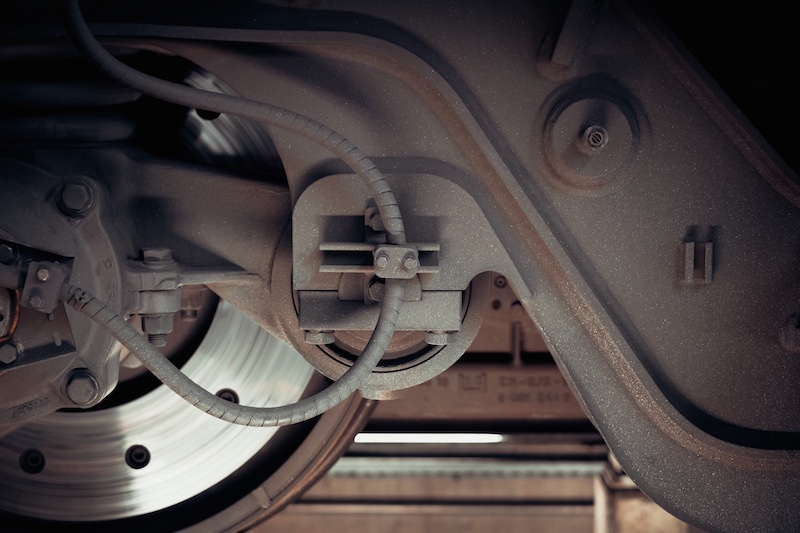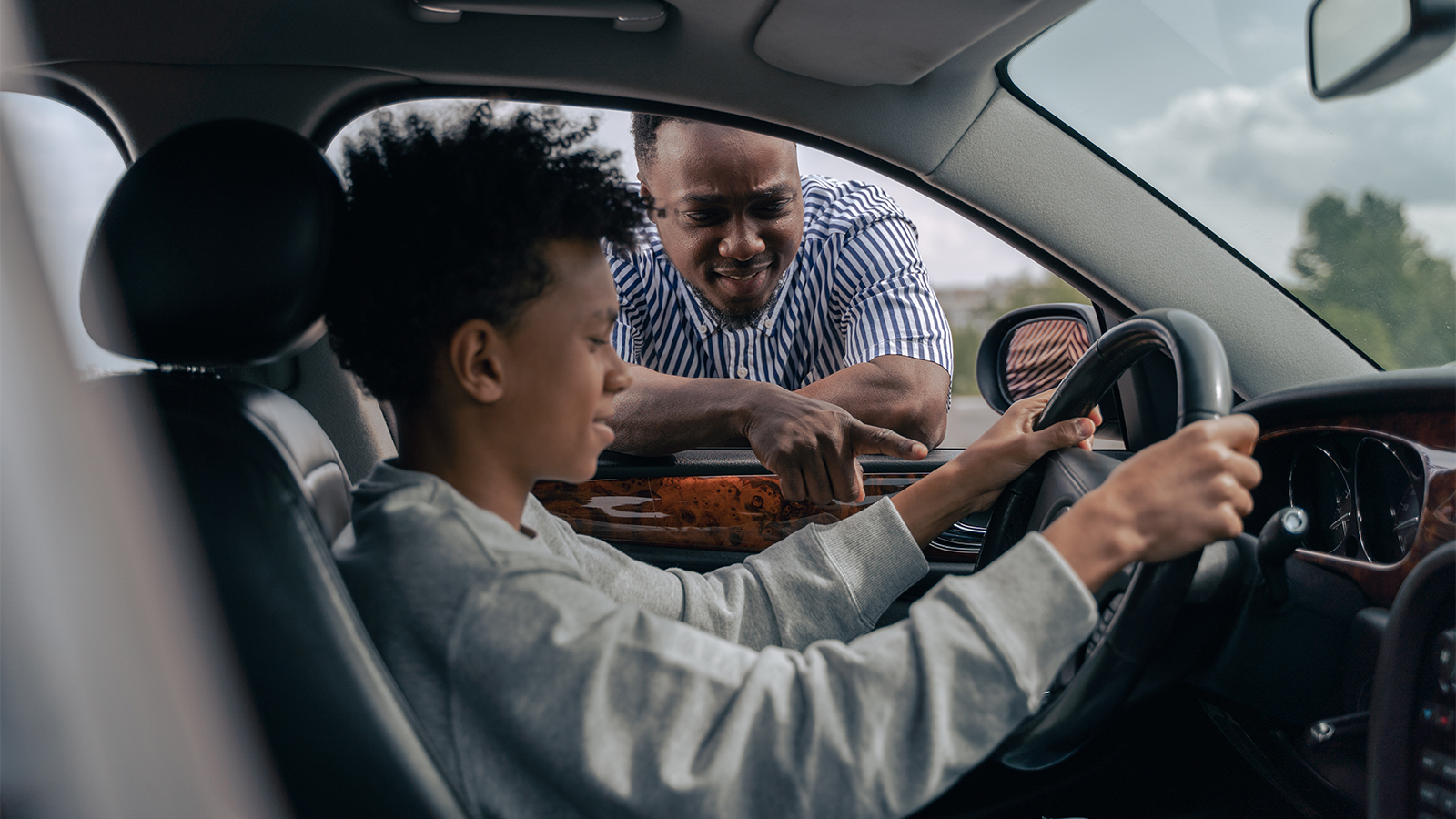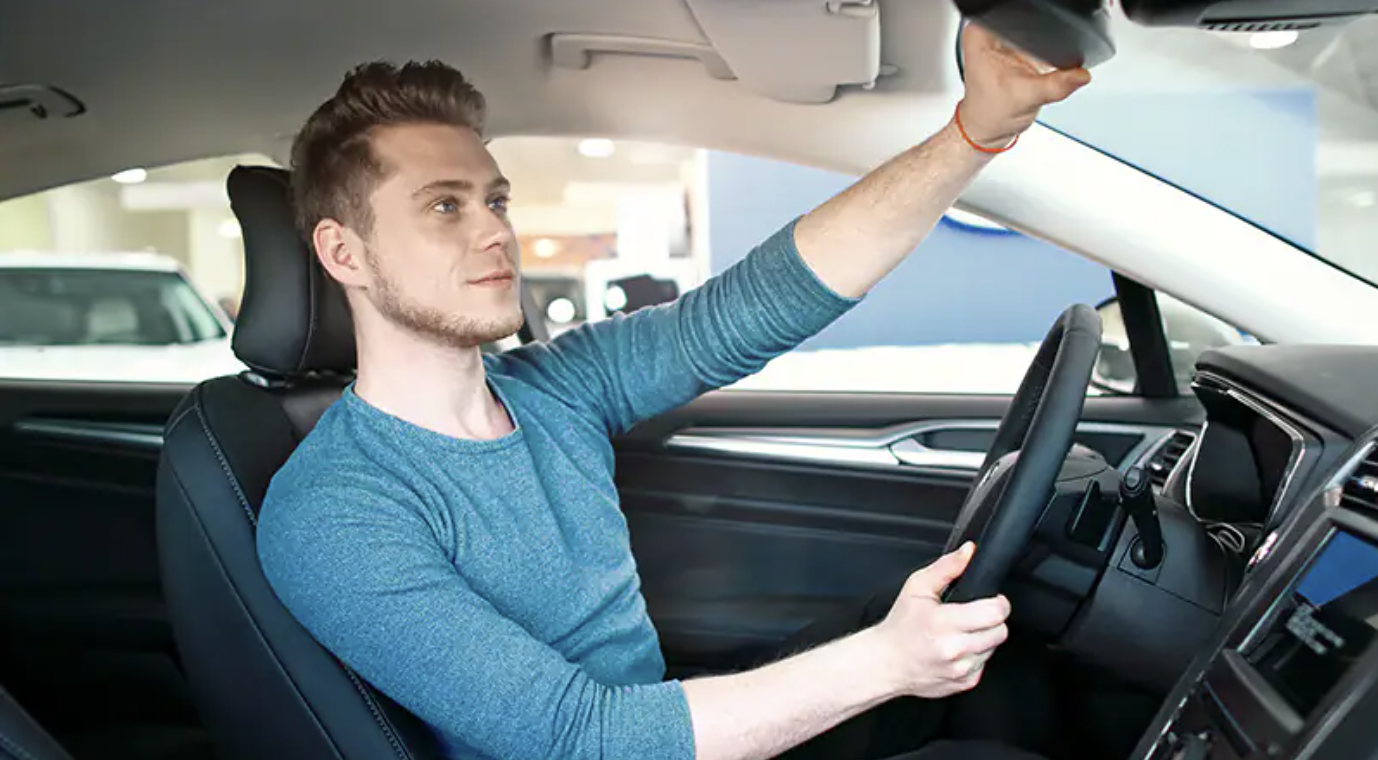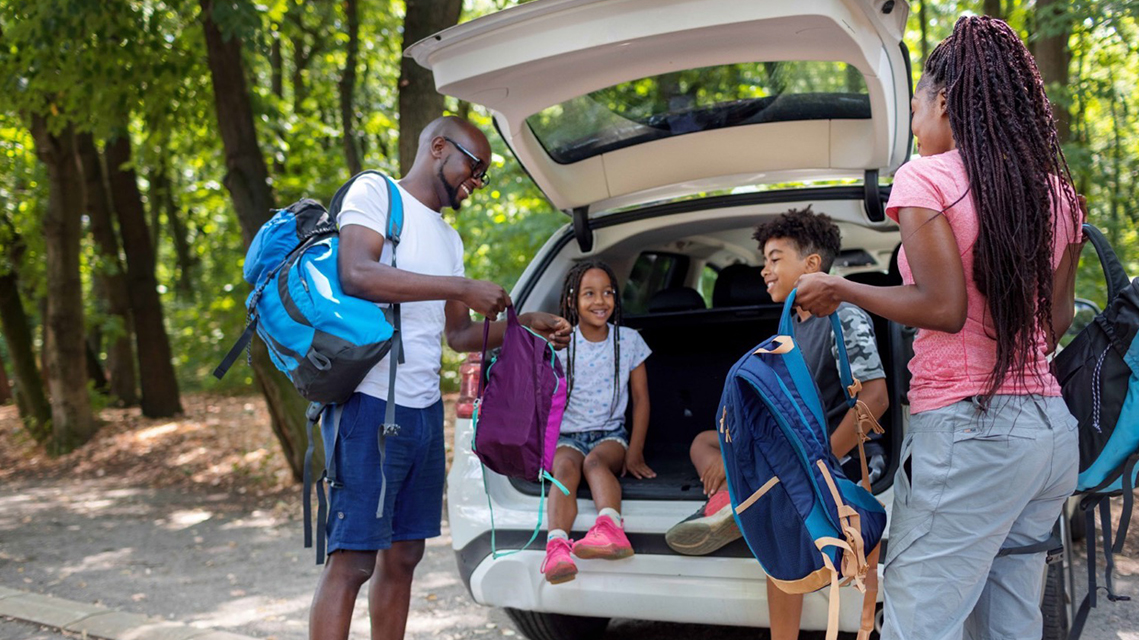Summer is here, and that means one thing for many families: road trip! To get you on your way, we've compiled a list of essential summer maintenance from air conditioner maintenance to brakes, air filters and much more. Here's what to keep in mind before setting out. Let's get started on the list, shall we?

On the road | Wikimedia Commons
1. Tires
First, check your tread depth to detect irregular wear patterns (this can indicate suspension problems).
Here's an easy method: take a penny and insert it into a tread groove, Lincoln head down. If the rubber touches the top of Lincoln's head, your tires are at a tread depth of 2/32", the minimum required by most state laws. If your tread depth is that low, you're also likely to see wear bars that are perpendicular to the tread grooves. Looks like it's time to replace your tires.
Now, try the same test with a quarter. If the rubber touches the top of George's head, your tread depth is 4/32". One more time with the penny — does the tread reach the Lincoln Memorial? If so, your tread depth is 6/32", and your tires are good for a while longer.
It's also a good idea to have your tires rotated before a long trip. Regular tire rotations will help ensure even wear (and are required by your tire warranty), but you'll also notice a big difference in road manners, handling and ride quality after a rotation.
Here are some additional resources to get the most mileage out of your tires:
Plan on getting your road trip maintenance done a couple weeks ahead of your trip. Although rare, it is possible for mistakes to occur while working on a vehicle, and it's better to make that discovery before you hit the road.
2. Serpentine belt
Your serpentine belt is important because it uses the rotation inside the engine to power accessory components such as the alternator, water pump and power steering. If the belt breaks while driving, you won't have long to make it to a repair shop since the alternator will no longer be creating electrical current and the vehicle will be running on battery power alone. Luckily, there are a couple of easy checks you can make at home for peace of mind before heading off on your road trip.
First, visually inspect the belt. If you see any places on the belt that are frayed, cracked or glazed, it's time to replace the belt. If there are any fluid leaks such as oil or power steering fluid that are getting on the belt, those should be repaired, too.
Next, you should test the belt tensioner. Push on the belt in the middle of the longest run and check to see if it deflects more than an inch and a half. Then, twist the belt. If you can twist it more than 90 degrees, the belt is too loose and might slip on the pulleys. If you can push or pull the belt more than an inch and a half, the tensioner should be replaced.
Learn more about your vehicle's belts with these articles:
3. Air Conditioning

If your car's air conditioning is blowing warm or hot air, the most likely cause is a loss of refrigerant in the system. Usually, the cure for this is to recharge the refrigerant with something like AC Pro since all systems will lose a small amount of refrigerant over time. If your AC doesn't seem to be working properly or it topping off the refrigerant only helps for a short period of time, there may be a failing component in the system or a leak. In that case, visit a qualified repair shop, or (if you're up to the task) use one of the various leak detection methods to find the leak yourself.
Air conditioning work may seem daunting at first, but we'll break it down for you in these helpful articles:
4. Brakes and Brake Fluid
Your brakes are your vehicle's primary safety system. They're even more important if you're carrying or towing any sort of load. Typically, a set of front brake pads will last between 30,000 and 60,000 miles, depending on how the vehicle is used and driven. Your brakes will normally send you warning signs that should alert you they need to be looked at. Even if your brakes aren't sending these signals yet, you should still look at them and verify all is well.
One thing even some mechanics overlook is the condition of the brake fluid. Using a large flat blade (screwdriver or popsicle stick), lightly scrape the bottom of the brake reservoir. Remove the scraper and check it for sludge buildup. If it's excessive, you should flush your brake fluid completely with fresh fluid. Brake fluid absorbs moisture and any droplets of water in the system can boil off in extreme heat and cause bubbles of air, leading to a spongy brake pedal and poor braking performance. Never done this before? Here's our guide to changing your brake fluid, plus check out these additional resources:
- Brakes basics: components in the braking system
- Signs that your car needs new brakes
- How to replace brake pads
- How to replace rotors
- How to adjust drum brakes
5. Air Filter

Air filter | Wikimedia Commons
Your vehicle's engine needs a strong flow of clean air to run properly. There are two basic styles of air filters: those that are on top of the engine and those that aren't. Those that are on top of the engine are usually in a circular container that is secured by one or two butterfly nuts. Those that aren't are normally inside a box mounted to the fender. If you can't see light through it, it definitely needs to be replaced. Checking your air filter is also easy regular maintenance you can do at home, and we recommend inspecting the filter for replacement once a year.
6. Fuel Filter and Fuel System Cleaners
Fuel filters are maintenance items on some vehicles and they normally will last about 12,000 to 15,000 miles. Clogged fuel filters can't deliver the amount of fuel your engine needs to run properly. Fuel filters on most carbureted and some throttle body injected engines will be located either on the throttle body/carburetor or between the carburetor and the fuel pump. On other fuel-injected engines, the filter will either be mounted on the bulkhead or under the car near the fuel tank.
How to change the fuel filter depends on where it's located. Stock GM carbureted engines require a large wrench to remove the fuel inlet to access the filter, while most other vehicles have a filter located between the pump and carburetor that can be changed with a straight screwdriver. Fuel filters on some older injected cars are attached with clamps, while newer vehicles need special tools to remove fuel lines prior to filter removal.
Now that your engine is getting clean air and fuel, it's time to make sure it can take advantage of them. Fuel injectors and carburetor jets can be clogged by fuel additives and low-quality fuel over time. Advance Auto Parts carries several different fuel system treatments and cleaners, depending on your needs. An Advance Team Member will be happy to help you choose the product that will help your engine the most.
Keep reading to find out how to maintain your fuel system to get the maximum performance out of your engine, plus tips on getting good gas mileage on your trip:
7. Shocks and Struts
Tire-wear patterns caused by bad suspension parts usually take about 500 to 700 miles to set in to where they will only get worse, even if the parts are fixed. The higher tire temperatures caused by extended road trips will only make these more severe. Run your hands lightly over all four of your tires, feeling for pronounced height differences indicating bad shocks or struts. Next, push down strongly and quickly release each corner of the vehicle. Anything more than four rebounds (and, if you're being safest, even fewer) means you've got weak shocks or struts. Also, if you see any wetness beyond a minor seep (indicating they're leaking), replace them.
Replacing shocks and struts does take a few more tools and some know-how, but we know you can do it. Here's what you need to know to tackle this job:
- What's the difference between shocks and struts?
- What to know before replacing shocks or struts
- How to install shocks
- How to replace struts
8. Lubrication
Last, but certainly not least, check your fluids like oil, coolant and windshield washer fluid. If you're planning for a long summer trip, it's a good idea to change the oil and check your owner's manual for recommendations on viscosity for the temperature range of your destinations. For complete guidance, watch YouTube star Chris Fix's tips for getting road trip ready in this video:
Do you have any other recommendations for pre-road trip preparation? Leave a comment down below!








